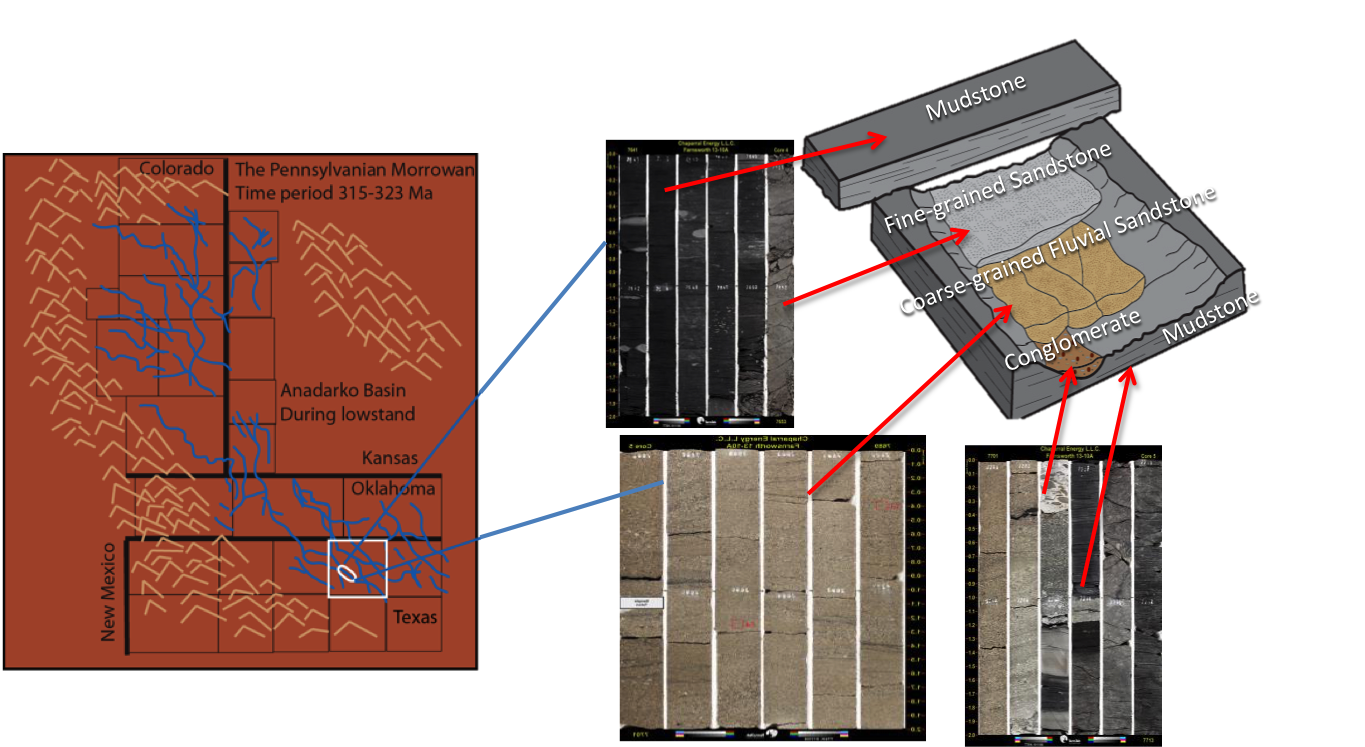Characterization is an essential part of this study. A variety of techniques were used to analyze not only the reservoir rocks where the CO2 is injected and stored, but also the overlying caprock that helps to contain the CO2 . Three new wells were drilled and cored, providing us with physical samples and a modern suite of geophysical logs that could then be correlated with the many older logs available for other areas of the field. From this work we were able to develop a geological framework to better understand the deposition of the reservoir and caprock, relate this to various other reservoir properties such as porosity and permeability, and then build a model of the reservoir that could be used to simulate the complex movement of oil, brine, and CO2 in the reservoir.
Results of the characterization study have demonstrated a number of important points that have been detailed in many of the papers referenced in the bibliography
Some of the important points are:
- The Morrow B reservoir, which is the target of the CO2 EOR project is a classic incised valley deposit typical of many Morrowan oil fields throughout the Anadarko Basin
- The overlying Morrow shale makes an excellent caprock and seal, as does the Atokan Thirteen Finger Limestone.
- A depositional model for the reservoir and caprock was refined through detailed core analysis and establishing wire-line log relationships across the field. The sediment package represents a transition from a fluvial system through to a more marine environment with the rhythmic facies transitions of the Thirteen Finger limestone representing high frequency cycles associated with the late Pennsylvanian climate.
- Several faults have been interpreted from the 3D seismic data collected as part of this study. None are believed to be significant in terms of seal integrity or regional extent, but they do present some heterogeneity that must be accommodated in reservoir models.
- Detailed analyses of core and log data has demonstrated that there are at least 8 distinct hydraulic flow units within the Morrow B that can be differentiated on the basis of porosity and permeability, ultimately tying back to variations in depositional and diagenetic processes.

